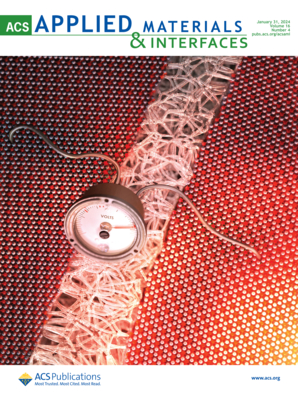Ferroelectric α-In2Se3 Semi-floating Gate Transistors for Multilevel Memory and Optoelectronic Logic Gate
IF 8.3
2区 材料科学
Q1 MATERIALS SCIENCE, MULTIDISCIPLINARY
引用次数: 0
Abstract
Progress in artificial intelligence (AI) demands efficient data storage and high-speed processing. Traditional von Neumann architecture, with space separation of memory and computing units, struggles with increased data transmission, causing power inefficiency and date latency. To address this challenge, we designed a semi-floating gate transistor (SFGT) that integrates data storage and logical operation into a single device by employing a ferroelectric semiconductor α-In2Se3 as a semi-floating gate layer. Leveraging the ferroelectric polarization of α-In2Se3, the device exhibits improved non-volatile memory performance with a high program/erase ratio of 1 × 106 and reliable durability over 1000 cycles. Through the dual-gate modulation, the SFGT achieves multilevel storage function with at least seven controllable programming states and performs three types of digital logic gate operations (“AND”, “NOR”, and “OR”) at an ultralow bias of 10 mV. Compared to traditional FGT architectures, the α-In2Se3-based semi-floating gate structure achieves multifunctional integration of data storage and logic computing, effectively addressing energy consumption and time delay issues in data transmission, making it highly significant for applications in data-intensive and low-power integrated circuits.

用于多级存储器和光电逻辑门的铁电 α-In2Se3 半浮栅晶体管
本文章由计算机程序翻译,如有差异,请以英文原文为准。
求助全文
约1分钟内获得全文
求助全文
来源期刊

ACS Applied Materials & Interfaces
工程技术-材料科学:综合
CiteScore
16.00
自引率
6.30%
发文量
4978
审稿时长
1.8 months
期刊介绍:
ACS Applied Materials & Interfaces is a leading interdisciplinary journal that brings together chemists, engineers, physicists, and biologists to explore the development and utilization of newly-discovered materials and interfacial processes for specific applications. Our journal has experienced remarkable growth since its establishment in 2009, both in terms of the number of articles published and the impact of the research showcased. We are proud to foster a truly global community, with the majority of published articles originating from outside the United States, reflecting the rapid growth of applied research worldwide.
 求助内容:
求助内容: 应助结果提醒方式:
应助结果提醒方式:


